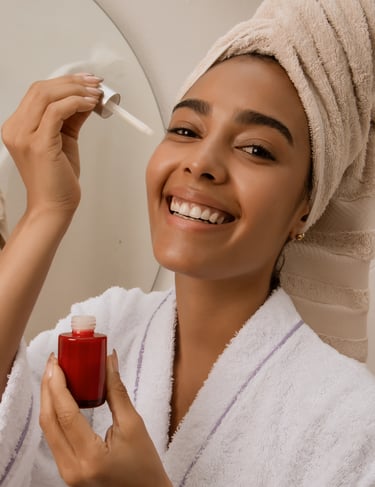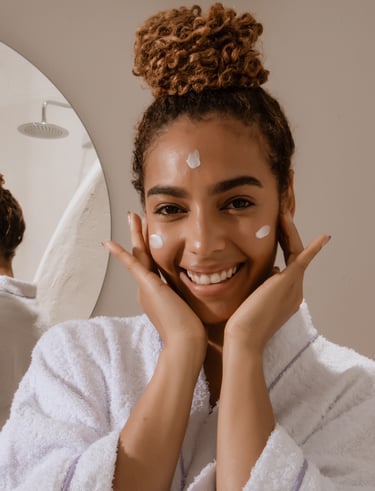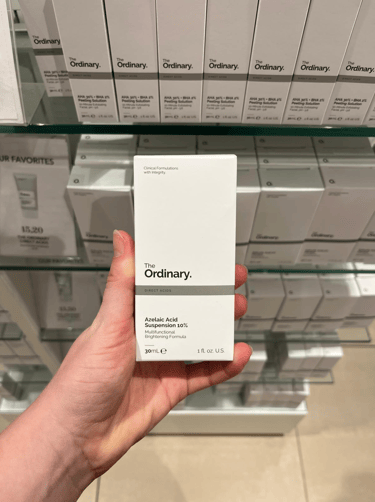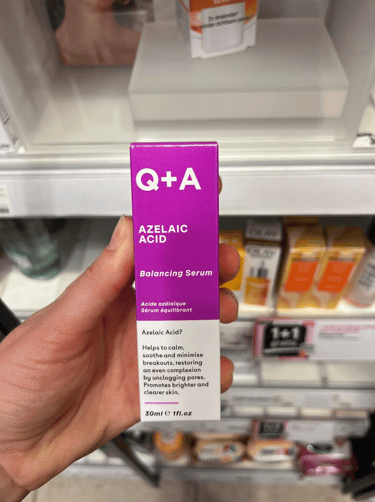Azelaic Acid: The Unsung Hero of Clear, Calm Skin
Discover why azelaic acid is the skincare ingredient everyone’s talking about. Learn its benefits, how to use it, what to avoid, and the best products to try—including my personal favorites and results.
10/14/20253 min read


How It Became Famous Lately
If you’ve scrolled through skincare TikTok or browsed any Reddit skincare thread lately, you’ve probably seen azelaic acid being praised as the next holy grail ingredient. Once a quiet favorite prescribed by dermatologists, it’s now having a major moment thanks to its versatility and gentle effectiveness. From fighting acne and rosacea to brightening skin tone, azelaic acid is proving it deserves a permanent spot in your skincare lineup.
Benefits for the Skin
Azelaic acid is a naturally occurring dicarboxylic acid derived from grains like barley and wheat—but don’t let that fool you, it’s a true multitasker. Here’s what it can do:
Clears acne: It fights acne-causing bacteria and helps unclog pores without the irritation that often comes with stronger actives.
Reduces redness and rosacea: One of its standout benefits is its anti-inflammatory effect, which soothes redness and calms rosacea-prone skin.
Fades hyperpigmentation: It gently inhibits melanin production, making it great for fading dark spots and post-acne marks.
Improves skin texture: Regular use can smooth out roughness and leave skin looking more refined and even.
Essentially, it’s a gentle overachiever that works for almost all skin types—including sensitive ones.
How to Use It
You can find azelaic acid in strengths ranging from 5% to 20%, depending on whether it’s an over-the-counter or prescription formula. Here’s how to make it part of your routine:
Start slowly: Use it once a day at first (preferably at night), then increase to twice daily if your skin tolerates it well.
Apply on clean, dry skin: After cleansing and toning, apply a pea-sized amount to your entire face—not just problem areas.
Follow with moisturizer: It pairs beautifully with hydrating and soothing products like ceramides and niacinamide.
Always wear SPF: Like many actives, azelaic acid can make your skin more sensitive to the sun.
What Not to Do
Even though azelaic acid is gentle, it still needs some care in how you use it. Avoid layering it with too many strong actives, like glycolic acid or retinoids, until you know your skin’s limits. Be patient, as results take time and consistency rather than overnight miracles. And don’t forget sunscreen—UV exposure can undo its brightening and calming benefits.
My Experience
When I first tried azelaic acid, I wasn’t expecting much. My skin was breaking out around my chin, and I had lingering redness that never seemed to fade. After about four weeks, I started noticing subtle but real changes—less irritation, fewer breakouts, and a smoother overall tone. By the two-month mark, I was hooked. It didn’t sting like other acids, and my skin just looked healthier.
Now, it’s a staple in my nighttime routine—a quiet achiever that keeps my skin balanced, calm, and bright.
Product Recommendations
Here are some tried-and-true azelaic acid products for different budgets:
The Ordinary Azelaic Acid Suspension 10% – affordable, effective, but slightly silicone-heavy texture.
Paula’s Choice 10% Azelaic Acid Booster – lightweight and great for layering with other products.
Q + A Azeliac Acid Balacing Serum — this is a great mid-priced option with a natural formula.
The INKEY List SuperSolutions Azelaic Acid 10% Serum – a soothing gel-serum designed to calm irritation and even out tone.
Azelaic acid might be subtle, but it delivers real results. Gentle, effective, and versatile—it’s a must-have for clearer, calmer, brighter skin. Stick with it and let consistency do the magic.
This post may contain affiliate links, which means I may earn a small commission if you purchase through them—at no extra cost to you. I only recommend products I truly love and use myself.





